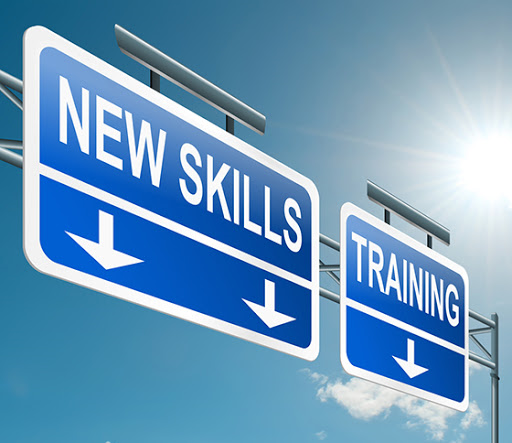Why is defining the “workforce of the future” important today?
March 17, 2020. A day in our country when everything changed. When headlines across the U.S. read, “U.S. leaders tighten restrictions to slow coronavirus outbreak,” and “Stocks struggle to rebound from worst day since 1987,” but also, “Amazon to hire 100,000 to keep up with online shopping surge.” In those subsequent days and months, all businesses, education institutions, and citizens would feel the personal and professional impact of the global pandemic, COVID-19.
Fast-forward to June. Industry Week reports, “The world has transformed more in the last three months than it has for decades – and with it, so has the skill set required of the manufacturing workforce. Reskilling workers in the age of automation has been a growing discussion point among manufacturing leaders. But we are past the point of discussion and have reached the time for action.”
I would venture to say that now, almost 4 months later, that this sentiment still stands true and that it reaches far beyond the manufacturing workforce. We are currently living through a fundamental transformation in the way we live and work. This isn’t a time to sit back and wait for events to unfold. We need to be prepared for the future and do our best to understand it.
So how do we do this? First, we must ask ourselves a few questions: What have we learned? What have we been most challenged by? How do we organize and align business, industry, and visionary needs? How do we define the talent pipeline that we are looking for and want/need to attract? From our existing workforce, how do we determine all who are unemployed, those that are underemployed, and those that are waiting to enter the job market?
Here are my thoughts: We need to set measurable goals. We need funding. We need policy changes at the state and perhaps federal level. We must align education, business, and technology like a three-legged stool. As technology moves at a pace that has changed every aspect of our lives and will continue to create change, all industries will need to continue to evolve and change how they do their work to keep up. Also, we all need to remember it is ok for us to be uncomfortable.
A survey conducted by PwC on the “Workforce of the Future, the Compelling Forces Shaping 2030,” revealed interesting findings from the more than 10,000 respondents:
- 37% are worried about automation putting jobs at risk, up from 33% in 2014.
- 74% are ready to learn new skills and re-train to remain employable for the future.
- 60% think fewer people will have long-term stable employment
- 73% think technology can never replace the human mind.
As McKinsey and Co. reported in “The future of work in America: People and places, today and tomorrow,” “In the decade ahead, the next wave of automation technologies may accelerate the pace of change. Millions of jobs could be phased out even as new ones are created. More broadly, the day-to-day nature of work could change for nearly everyone as intelligent machines become fixtures in the American workplace.”
The workforce of the immediate future is being significantly shaped by technology and the effects of COVID-19, and in the long-term, we are certain to see even more changes. As I said before, this is not a time to sit back and wait. Today is the time for Wichita and the region to plan for that future, with as much energy and urgency as we are giving immediate challenges.
Let us define a process that:
- Identifies immediate, short-term, and long-term workforce needs of business and industry in south-central Kansas
- Aligns those needs with the existing (or refocused) infrastructure/assets/programs for training, retraining, and education
- Matches and markets programs with workers/talent who are
- Unemployed
- Looking to relocate here (recruit them)
- Ensures inclusion and diversity is integrated throughout the process
Who are the right people to lead this? Business leaders, community leaders, entrepreneurs, gig workers? As McKinsey and Co. also reported, “The United States can improve outcomes nationwide by connecting displaced workers with new opportunities, equipping people with the skills they need to succeed, revitalizing distressed areas, and supporting workers in transition. Returning to more inclusive growth will require the combined energy and ingenuity of business leaders, policymakers, educators, and nonprofits across the country.”
What does success look like? This is just a start, but consider… Jobs are filled. New skills are identified by businesses and industries. Training and education programs meet the needs of businesses and industries. Certificates, industry recognized credentials, badges, and degrees all increase. The economy is re-invented as one that is comfortable with change – especially where business, education, and technology converge. Education includes Generation Alpha – K-12 – STEM Career Pathway to the Future. Recovery is equitable for all demographics.
It is important for our citizens, for our community, for our city, state, and nation that we act now with thought leadership to create the expectation, implementation, and the hunger for life-long learning. Blair Sheppard, Global Leader, PwC, said it best - “We should remember that intellectual complacency is not our friend and that learning – not just new things but new ways of thinking is a life-long endeavor.” We must act now. This isn’t about some distant future of work. Change is happening now, and it will continue to accelerate. Let’s focus on our people and not jobs; on creating a sense of urgency now, not later, so that we will have no regrets. Let’s identify the barriers within our systems and make this a time of re-invention and scaling. Let’s challenge the status quo and focus on coalition-building for our city, community, and state to be leaders in the future of the workforce and post-pandemic workforce solutions.
References:
Reskilling and Recovery Network https://www.nga.org/reskilling/
https://www.pwc.com/gx/en/services/people-organisation/publications/workforce-of-the-future.html


